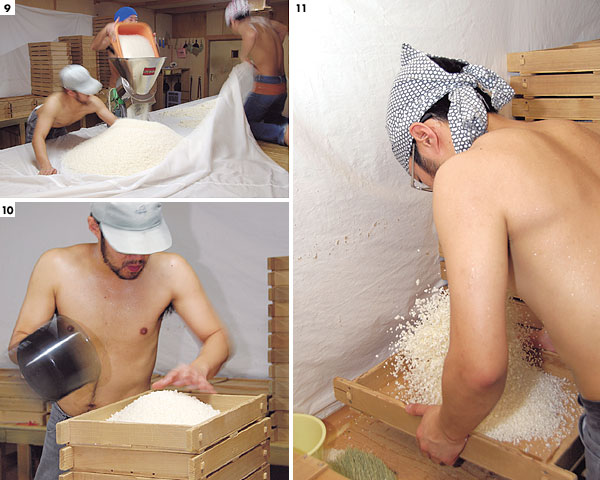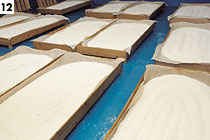Special Feature![]() Here’s to Japanese sake!
Here’s to Japanese sake!
The Long Journey from Polishing to Bottling

The key to making a good batch of sake is in the koji mold. Some of the steamed rice is taken to a separate room where the temperature and humidity are high enough for the koji spores to reproduce vigorously. The rice is spread out (5), with temperature controls functioning (6). Koji spores (7) are sprinkled on top (8).


The koji rice mixture is covered with a cloth for a full day to keep the heat in and promote fungal reproduction. Then the rice and koji mold that has formed are broken up (9) and transferred to wooden trays called koji-buta (10). The fungus gives off heat as it reproduces, so the trays are shuffled and the mixture is shaken (11), to lower the temperature and keep the koji mold action fairly uniform. It is winter outside, but inside where they are hard at work the temperature is 30 °C, the humidity about 60%. After two full days, the koji mold has done its job (12).